
In the hyper-competitive economic development market, getting your region noticed and short-listed can come down to simply avoiding common marketing mistakes. In this post, we’ll delve into six of the most common pitfalls we see economic development marketers making and how you can sidestep them effectively.
Not using market research to find the right niche(s)
Market research forms the bedrock of any good marketing strategy. Without it, you’re essentially left in the dark, making educated guesses about what will work. In the ever-shifting landscape of economic development, this kind of research is crucial to understanding not only your target audience but also clearly defining target industries. According to Jim Walton, CEO of Brand Acceleration, Inc.
“Companies want to know what you’re good at. Equally important is to understand why those industries were selected and how your community fits those industries.”
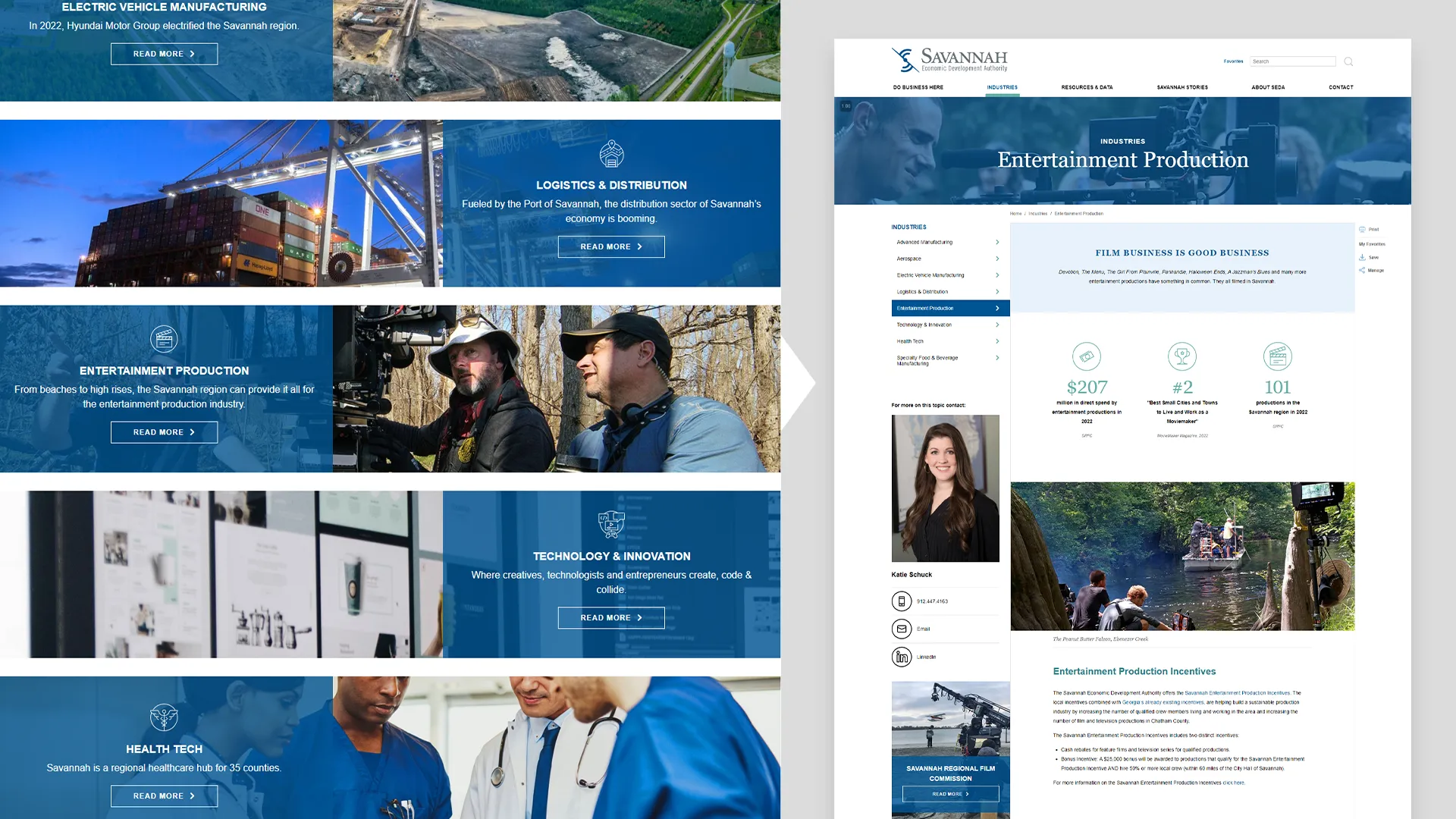
For example, the Savannah Economic Development Authority has a special page on its website devoted to those industries they’re uniquely suited to. Each industry then gets its own page to showcase the region’s expertise in that area. This lets prospects and site selectors know they have a deep understanding of that industry. As creative marketing agency Hue and Tone writes,
“Clearly marketing to a specific target industry shows that you know your area and have a solid understanding of what companies will best succeed there.”
It’s tempting to not want to niche too much. There’s a fear of alienating a possible prospect and missing out on opportunities. But the opposite is true. If you focus on what your region is good at you attract the right kinds of attention and eliminate projects you’re not suited for and will end up just wasting precious time.
Not Standing Out
Let me guess, your region is “a great place to live and work”, with a high “quality of life” and “exceptional workforce”? Well, yours and any of the other 39000 municipalities competing for the same projects in the US. This is part of what makes Economic development marketing so challenging. Because many communities offer similar benefits it’s important to differentiate your region by highlighting unique aspects that set you apart from the competition.
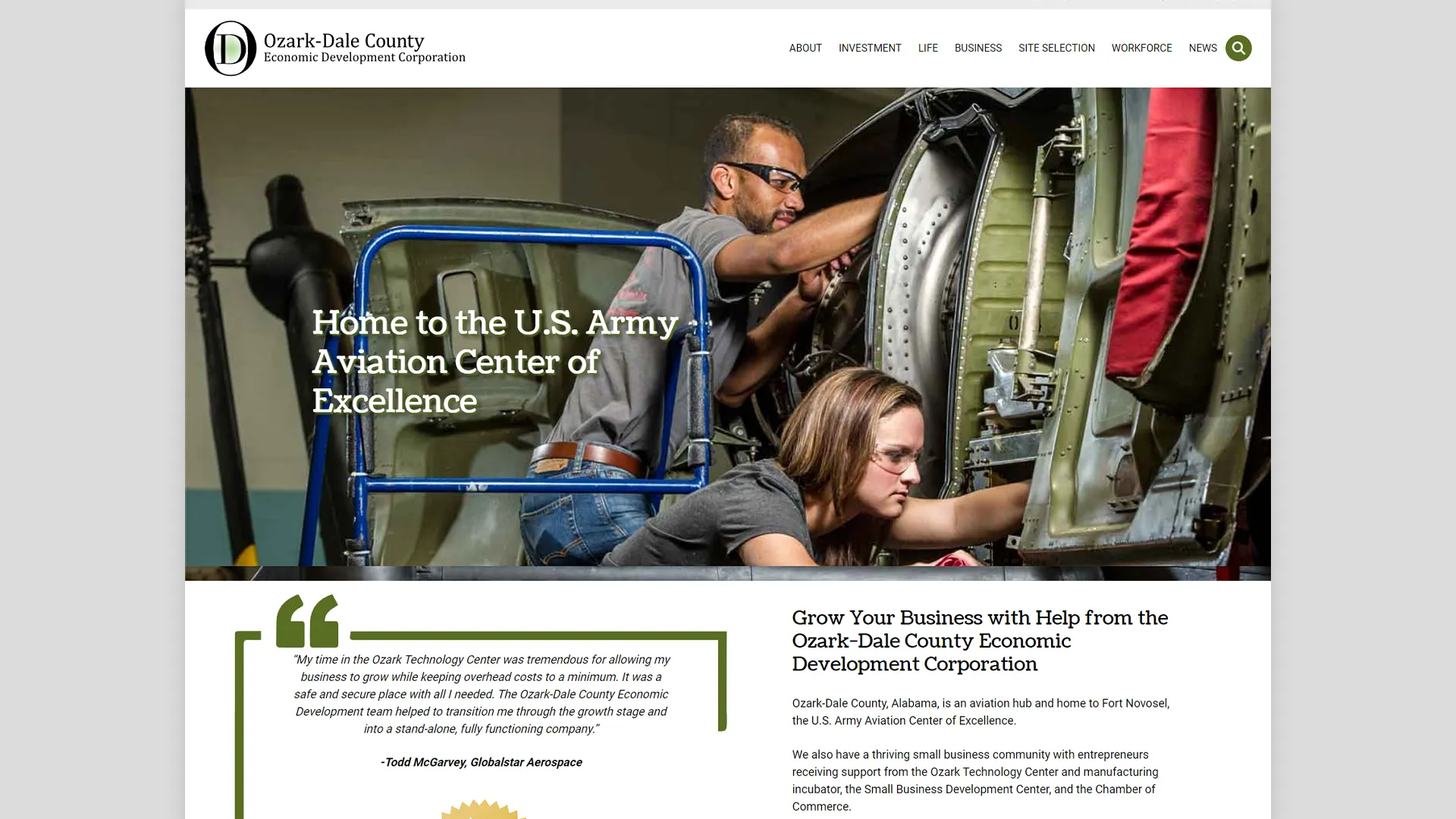
For example, Ozark-Dale County, Alabama highlights its connection to the U.S. Army Aviation Center of Excellence, setting it apart from other similar-sized regions, and catching the eye of any aviation companies looking for a region ready to handle those specific challenges.
Andrew Levine, President/chief creative officer of Development Counsellors International ( DCI ) adds in his article for Forbes,
“San Marcos, Texas markets itself as the fastest growing city in America. Warsaw, Indiana is the orthopedics capital of the world. New Jersey has more scientists and engineers per square mile than any other state. These are all tangible examples of differentiation.”
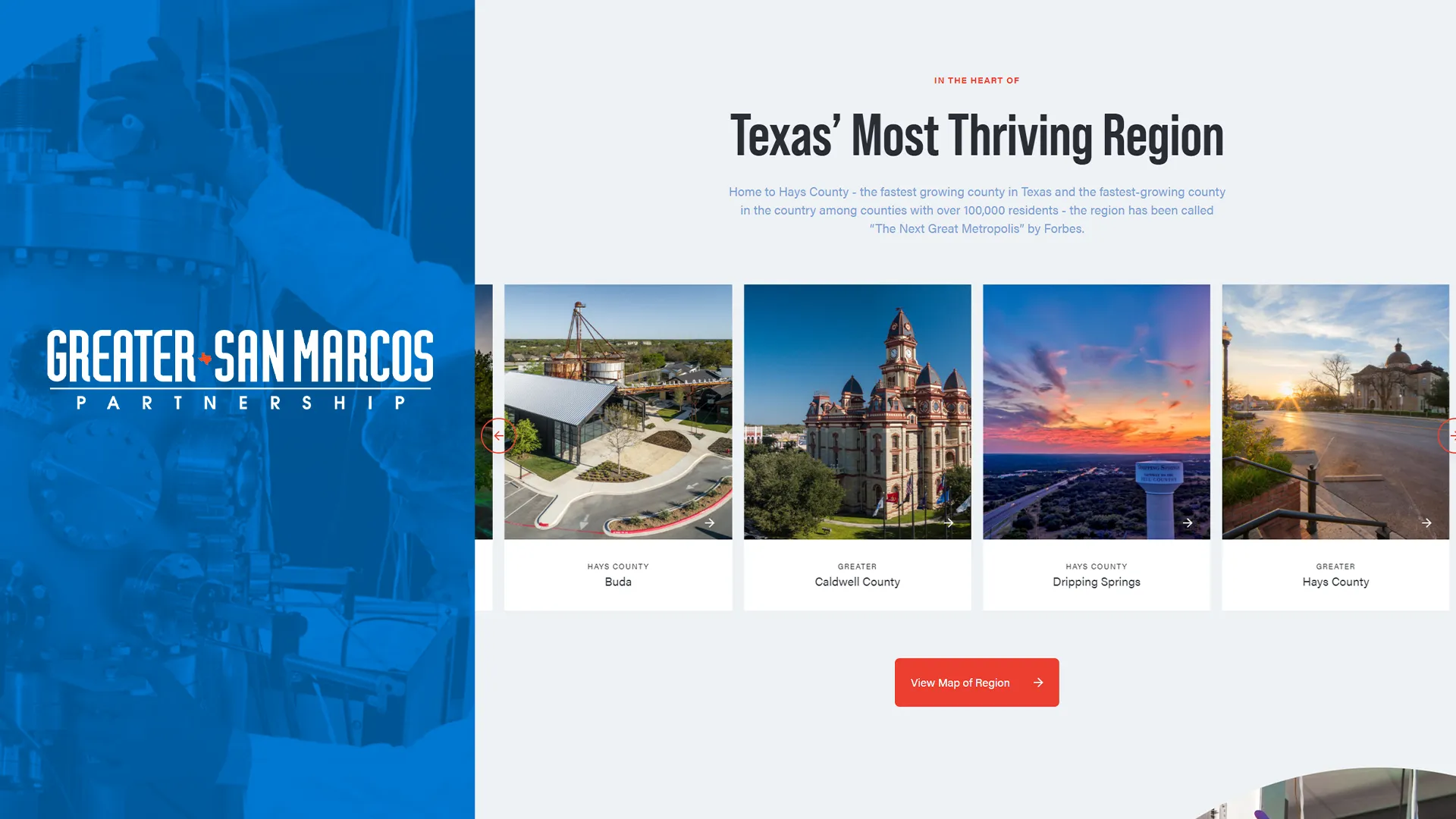
Not Identifying Your State
Unless your region’s name is easily recognizable, like Nashville or Orlando, you should include as many context clues as possible as to where you’re located. This means not just including maps to pinpoint your community in relation to other landmarks, but also something as simple as putting your state’s name front and center. This is particularly important when working with international prospects who might not be as familiar with US place names.
St. Tammany Parish’s economic development website is visually stunning, and even incorporates the shape of their region in their logo, but where is it? If you’re not already familiar with the outline of their state or are visually impaired, there are no noticeable indicators on the Homepage that this is in Louisiana. You’d have to scroll to the footer and look for their contact information in the bottom right-hand corner.
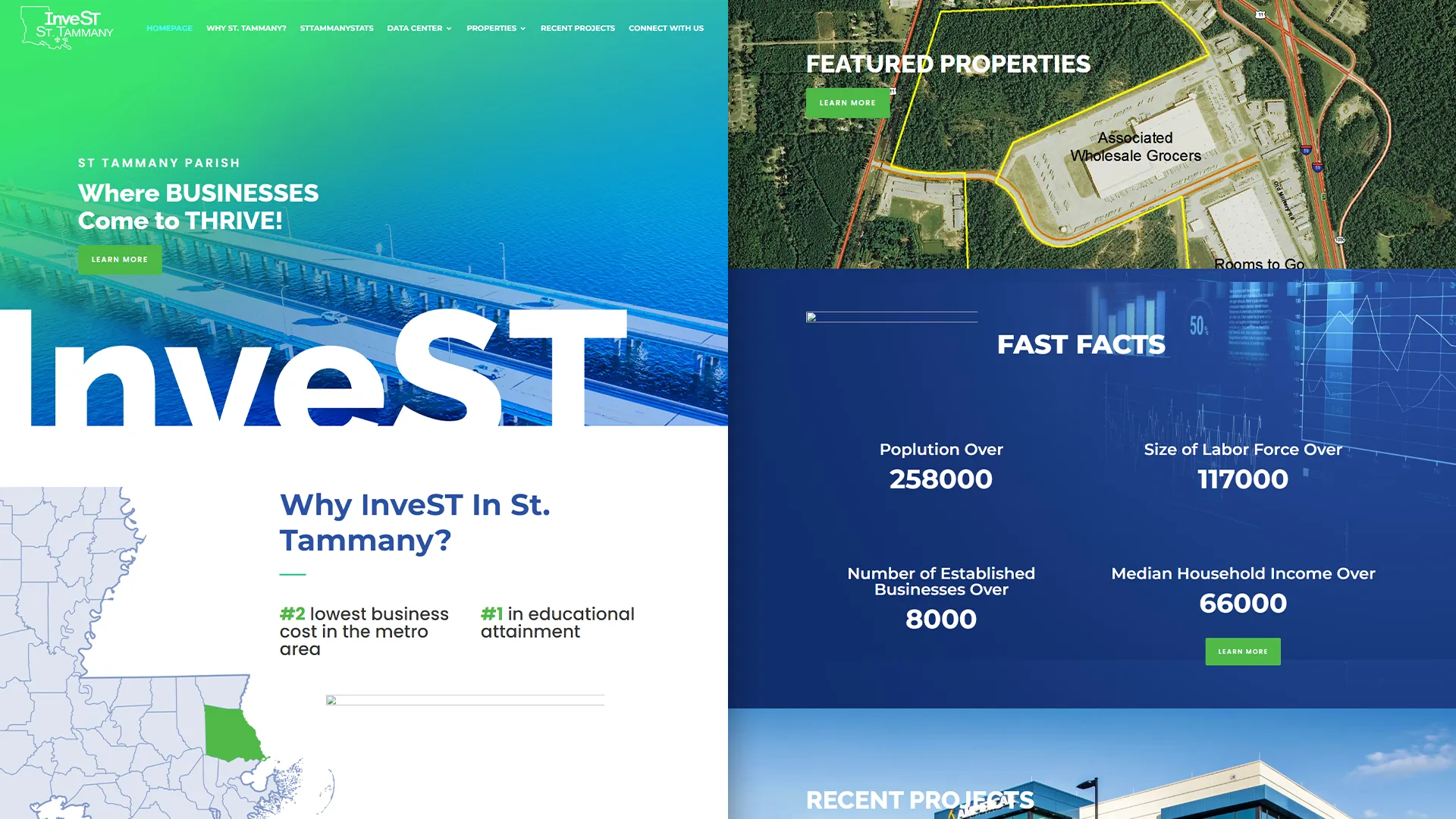
Iredell’s Economic Development Corporation, on the other hand, includes the name of their state in their logo as well as prominently displaying a state map on their homepage showing their proximity to larger cities like Charlotte and Raleigh.
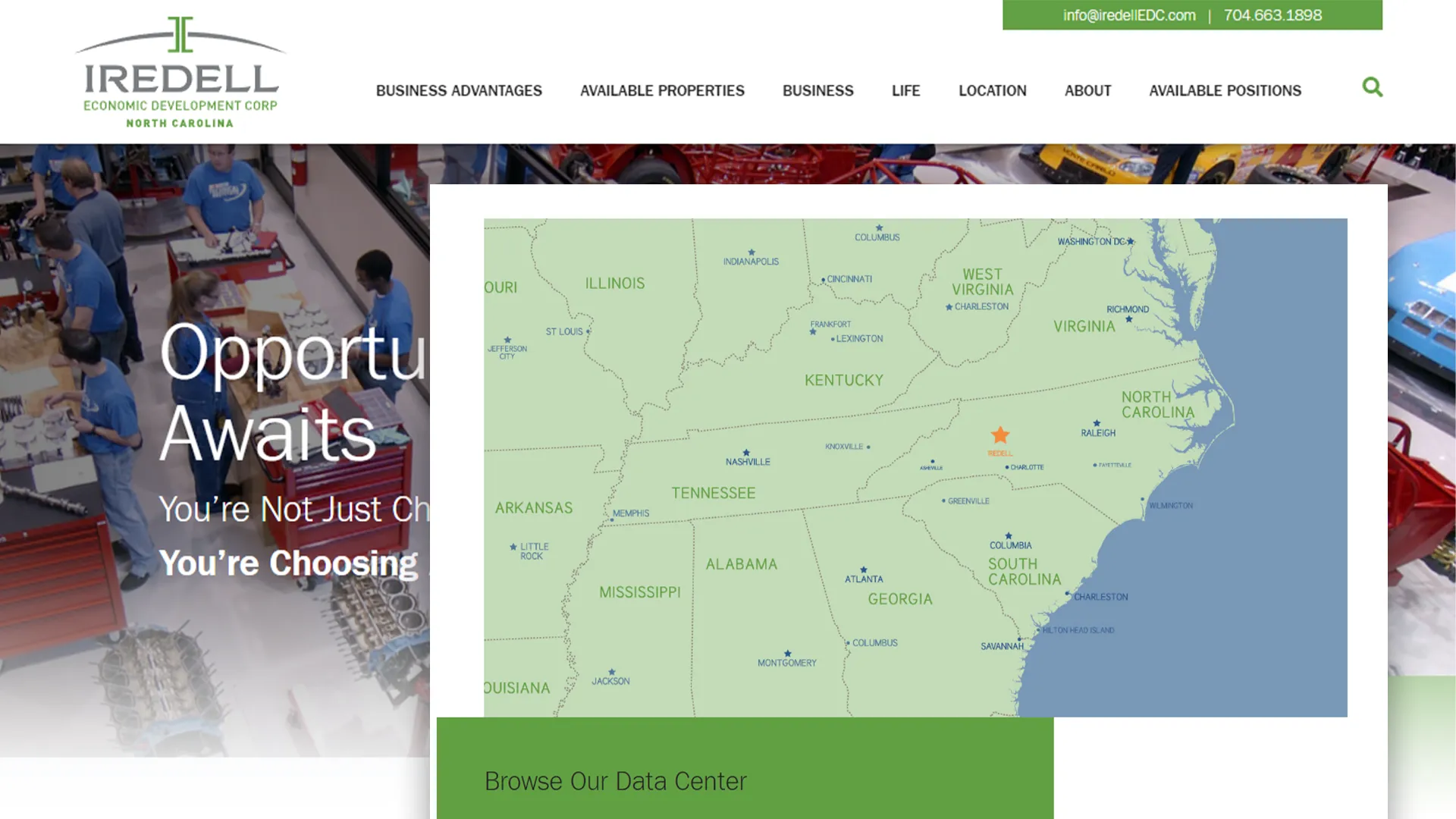
Not engaging with your target audience
Imagine you’re at a crowded party, and someone is yelling at the top of their lungs, trying to get your attention. It’s annoying, right? Well, the same principle applies to marketing. Shouting your message at your audience without listening to their needs and preferences is a surefire way to turn them off. To truly succeed in economic development marketing, it’s all about creating a two-way conversation. That means not just talking but also listening. When you engage with prospects, clients, and local businesses, ask questions, and genuinely listen to their responses, you’re showing that you value their input. As Hue and Tone Creative suggest,
“Grow your knowledge of what attracts companies to your city or state by speaking to the people that are already there and by building relationships with local corporate leaders.”
Valuing quality of life over projects
This sounds terrible, I know. But let me explain. Although having a place where people can afford, and love, to live is becoming more important to workers, it shouldn’t be your leading argument when it comes to luring in new businesses. No matter how good your quality of life is, you won’t receive a project if you don’t have the required locations, buildings, labor, training, or infrastructure. As Walton adds,
“In today’s business climate, speed to market is the name of the game. If you don’t have business sites with infrastructure in place, you’re in a world of hurts.”
For example, San Patricio County Economic Development Corporation’s website features an interactive tool to prominently highlight large industrial and other development-ready properties.
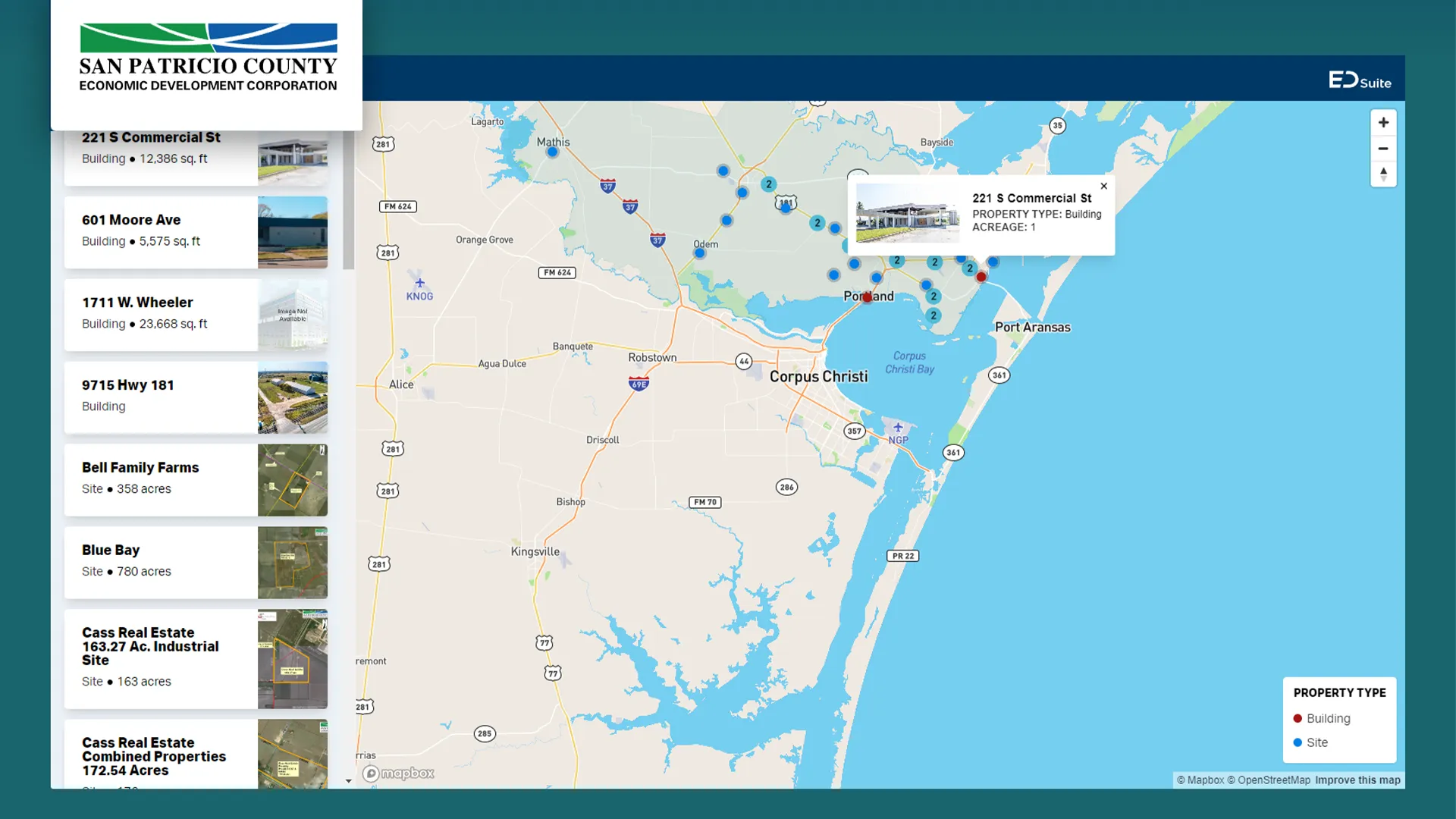
Inconsistent Branding
You have mere seconds to grab busy site selectors’ attention. So if they have to spend a few moments confirming they’re on the right Facebook page or website because they look different then you’ve added an unnecessary amount of friction and put your community at a disadvantage. It might seem like a small thing, but incoherent branding across different marketing channels can confuse the audience and dilute your region’s brand identity.
If you visit the York County Development Corporation’s website you’ll notice it has a recognizable wedge of cheese icon in their logo. You’ll see it again on their Instagram and Twitter (sorry, X) page. But it’s not the logo used on their Facebook or YouTube page. So even though the logo does read York County, you might be forgiven if you thought you stumbled on the wrong York County page and left a bit confused.
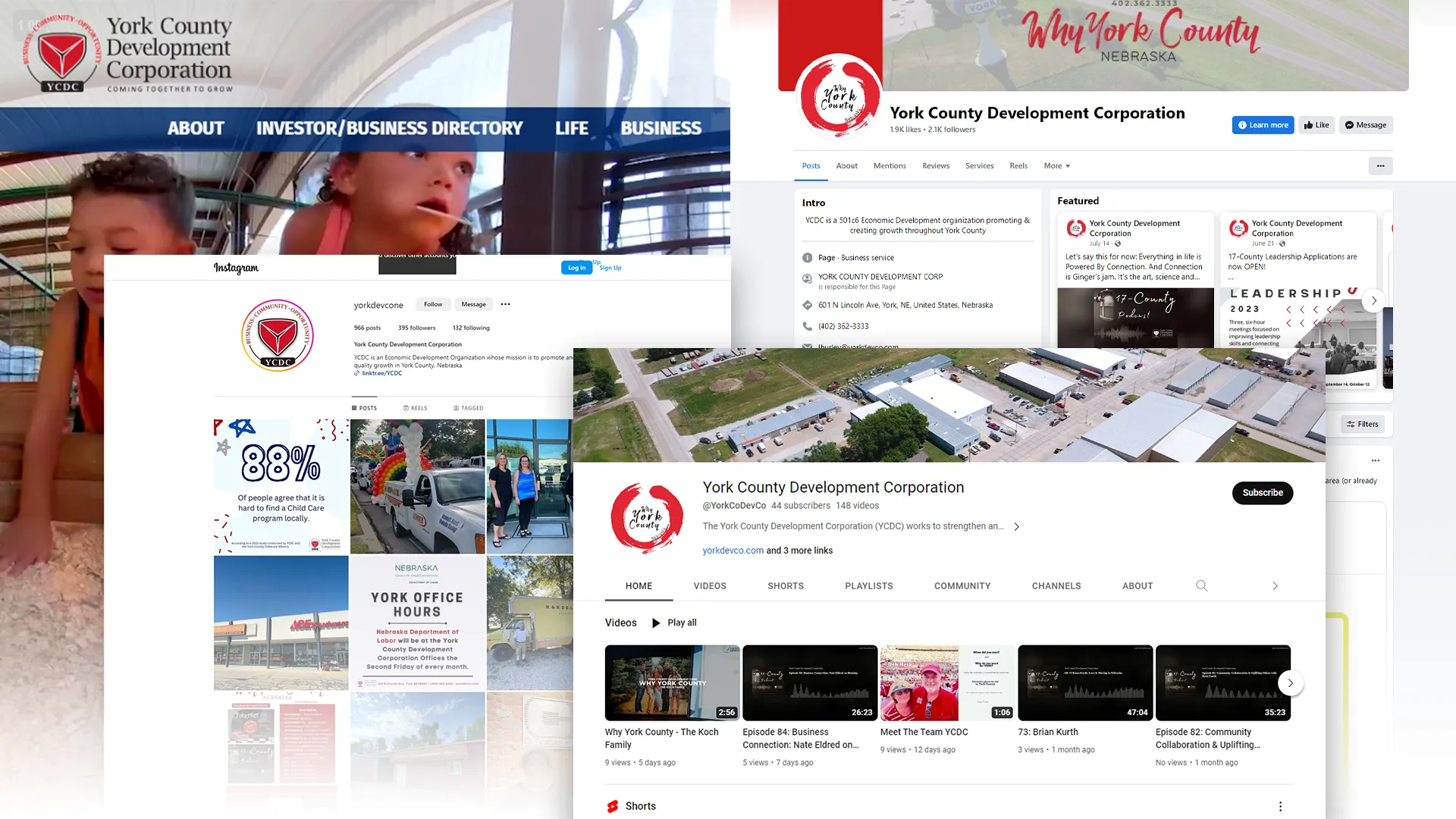
Conclusion
Effective economic development marketing is hard enough without stepping into these common pitfalls Find the right niche and industries to target. Distinguishing your region by showcasing what makes it unique, then commit. Remember to clearly identify your location, especially when dealing with international prospects. Converse with your audience and build relationships. While quality of life is important, it should not overshadow the need for essential infrastructure. Lastly, maintain consistent branding across all marketing channels to ensure a seamless and memorable experience for your audience. By steering clear of these pitfalls, you can pave the way for economic development success that truly stands out.





